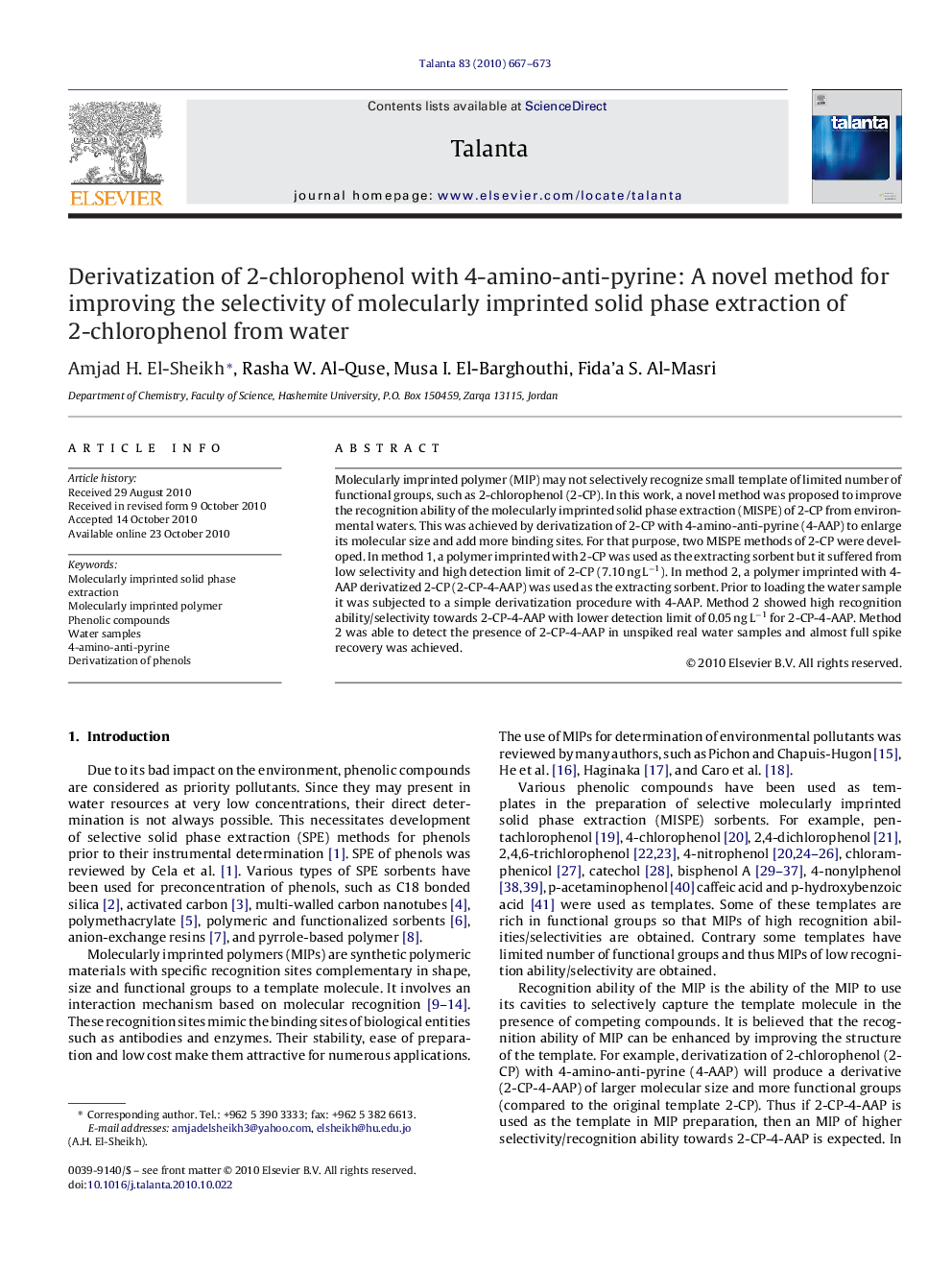| Article ID | Journal | Published Year | Pages | File Type |
|---|---|---|---|---|
| 1242860 | Talanta | 2010 | 7 Pages |
Molecularly imprinted polymer (MIP) may not selectively recognize small template of limited number of functional groups, such as 2-chlorophenol (2-CP). In this work, a novel method was proposed to improve the recognition ability of the molecularly imprinted solid phase extraction (MISPE) of 2-CP from environmental waters. This was achieved by derivatization of 2-CP with 4-amino-anti-pyrine (4-AAP) to enlarge its molecular size and add more binding sites. For that purpose, two MISPE methods of 2-CP were developed. In method 1, a polymer imprinted with 2-CP was used as the extracting sorbent but it suffered from low selectivity and high detection limit of 2-CP (7.10 ng L−1). In method 2, a polymer imprinted with 4-AAP derivatized 2-CP (2-CP-4-AAP) was used as the extracting sorbent. Prior to loading the water sample it was subjected to a simple derivatization procedure with 4-AAP. Method 2 showed high recognition ability/selectivity towards 2-CP-4-AAP with lower detection limit of 0.05 ng L−1 for 2-CP-4-AAP. Method 2 was able to detect the presence of 2-CP-4-AAP in unspiked real water samples and almost full spike recovery was achieved.
